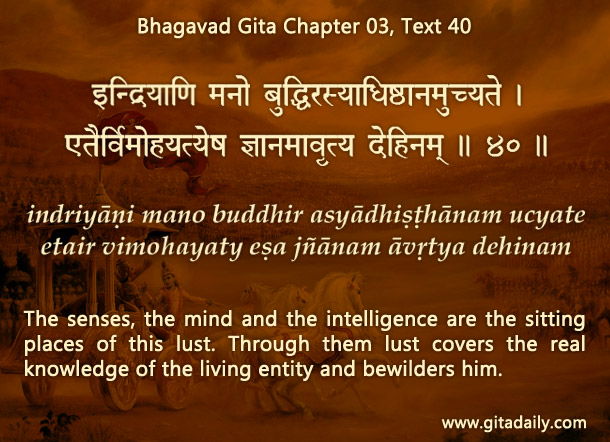Men sometimes accuse women of dressing provocatively. Women sometimes accuse men of seeing women just as sex objects.
Taking the discussion beyond such blame games, the Bhagavad-gita (03.40) states that lust is present in everyone’s senses, mind and intelligence.
Lust allures men with pleasure, making them believe that sex is the gateway to life’s greatest happiness. When they believe this lie, men see women as sex objects.
Lust allures women with power – it makes them crave the thrill of captivating men by parading their assets.
Certainly, women can’t be blamed for men’s actions. If men commit sexual crimes, they are responsible, because the lust that made them do such things didn’t come from their female victims; it was present in them as a result of their own past indulgences, and they chose to act on it.
And conversely, men can’t be blamed for women’s actions. If women argue that men are attracted to only those women who exhibit their contours and so they too have to do that to gain attention, then they perpetuate the same objectification that they object to – whatever attention they may thus garner will be as sex objects, not as sentient persons.
The Gita’s gender-neutral delineation of lust’s location underscores that men and women are not opponents, victimizing each other. Rather, both are potential victims of lust – and should be partners in fighting it.
Gita wisdom explains that we are neither male nor female but are spiritual beings – and we can find lasting happiness by realizing our trans-sexual spiritual love for Krishna, the all-attractive, the all-loving Supreme. By taking individual responsibility for conducting ourselves in ways that decrease the feverishly high sexual temperature in our culture, we can further our spiritual growth and progress towards relishing the highest happiness – happiness that lust promises but never delivers.
Explanation of article:
https://www.youtube.com/watch?v=xpV7hlQNlQg
Podcast:


Very well written Prabhu !! This helps me think in better way.
very well explained!! hare krsna